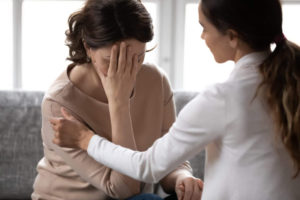Summer is supposed to be prime time for outdoor activities. Trips to the beach, backyard barbecues, and family vacations are all centered around this one season. But some can’t seem to get in the mood for some fun in the sun. Instead, summer is a total bummer.
With the summer onset, there are people who seem to suffer from a type of depression and become ill. This condition has become known as seasonal affective disorder, aka SAD. Recently it has been referred to as major depressive disorder with a seasonal pattern. This condition is just not a case of the blues but a major type of depression.
An estimated half a million people in the U.S. are said to experience seasonal affective disorder. SAD was first described in a 1984 issue of the medically reviewed journal, Arch General Psychiatry.
When Does Seasonal Affective Disorder Occur?
Most instances of this disorder are of the ‘winter SAD’ type. The symptoms of SAD can start in early winter and progress as the shorter days and the colder temperatures keep people from the sun which contributes to a state of overall lethargy. SAD is just not a case of the winter blues but a form of major depression.
Our body’s circadian rhythm, its internal clock, is affected by the amount of sunlight it receives. This cycle affects your sleep patterns as well serotonin levels in your brain. Those who have major depressive disorder with seasonal patterns have reported weight loss, anxiousness, and insomnia.
SAD is known to occur at any time of year. But according to the National Institute of Mental Health, a patient can only be diagnosed with SAD if the depression occurs at the same time of year for a consecutive 2 years. People with SAD will not experience it in the summer one year and in the winter next. If this happens, the individual likely has a mood disorder that they should talk about with a mental health professional.
It’s important to note that just because you have symptoms of summer depression it doesn’t mean you automatically have SAD. If you’re feeling down during the summer, it might mean you’re experiencing another type of depressive disorder.
There is also a quite rare form of SAD called summer depression that can start in spring and summer and end in autumn.
What Causes Seasonal Affective Disorder?
Although researchers haven’t been able to pin down what exactly causes seasonal depression, as noted earlier, it might have to do with the amount of sunlight people are getting. Regardless it’s important to gather as much health information as you can. Here are a few theories that have been suggested:
- Chemical Imbalance. People who are prone to SAD may have less serotonin activity in their brains. Serotonin stabilizes our mood and enables brain cells to communicate with each other. Because sunlight helps regulate serotonin, levels of it can fall during the winter months when there is less sun.
- Melatonin. The hormone melatonin determines our sleep cycle and kicks in when the sun goes down. Less sunlight during winter may increase melatonin production and make us sluggish. When it comes to ‘summer SAD’, the opposite is also true. Too much sun may decrease the levels of melatonin, also affecting our sleep patterns.
- Anxiety. People with SAD are often prone to anxiety and stress. Some have negative thoughts about the oncoming of the winter season. While those who have ‘summer Sad’ can have anxiety about outdoor social interactions, and whether they will look “good enough” in swimwear. People who are struggling with substance abuse can also experience SAD.
Symptoms of Summer Depression
A proper diagnosis should include the following:
- Loss of Appetite
- Weight Loss
- Trouble Sleeping
- Anxiety
- Being Anti-social
- Being Unmotivated
- Feeling Guilty
- Suicidal Thoughts
Treatment for Seasonal Affective Disorder
When seeking the right kind of medical advice, it’s important to talk to your doctor about all the treatment options that are provided.
- Bright Light Therapy. Light therapy, or phototherapy, utilizes a lightbox and fluorescent tubes to treat SAD.
- Cognitive Behavioral Therapy (CBT). This is a type of talk therapy that is said to be effective against SAD. Studies show that using CBT has the longest-lasting effects among all treatments.
- Medication. Doctors will sometimes recommend anti-depressant medications.
- Outdoor Time. For ‘winter SAD’ getting more sunlight can help with the symptoms. Going for a walk or just opening your windows can be beneficial.
- Vitamin D. Some doctors recommend taking a Vitamin D supplement to improve symptoms.
Learn More About Clinical Trials in Boston
Are you interested in participating in a clinical trial for depression? We have a wide variety of clinical trials available if you qualify and meet specific criteria.








